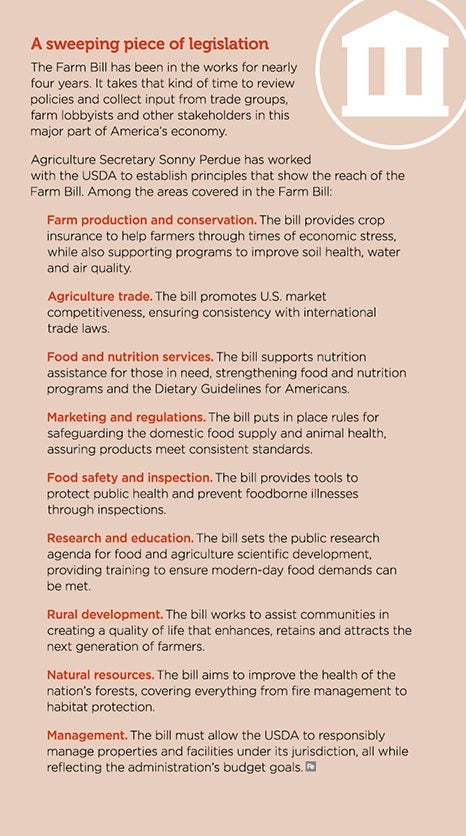The $867 billion farm bill signed into law by President Donald Trump on Dec. 19 is an important part of America’s economy. It’s especially important for school foodservice directors whose menu decisions could be affected by commodity price fluctuations brought on by trade wars and retaliatory tariffs
Passage of the bill relieves stress on those who had been worried about changes to the Supplemental Nutrition Assistance Program (SNAP)—also known as food stamps. At the last minute, a provision was removed from the House bill that would have changed the program and threatened the free and reduced price lunch program.
“This gives a peace of mind to our producers here who have to make plans for 2019,” Agriculture Secretary Sonny Perdue said after the bill was signed. “It’s a very stable bill for agriculture and for the consumers, as well.”
The passage allows other parts of the farm bill to move forward. Many parts of the farm bill had been in the works for nearly four years. It takes that kind of time to review policies and collect input from trade groups, farm lobbyists and other stakeholders in this major part of America’s economy.
So what does the farm bill cover? Prior to the December passage, Perdue worked with the USDA to establish principles showing the farm bill’s reach:




























